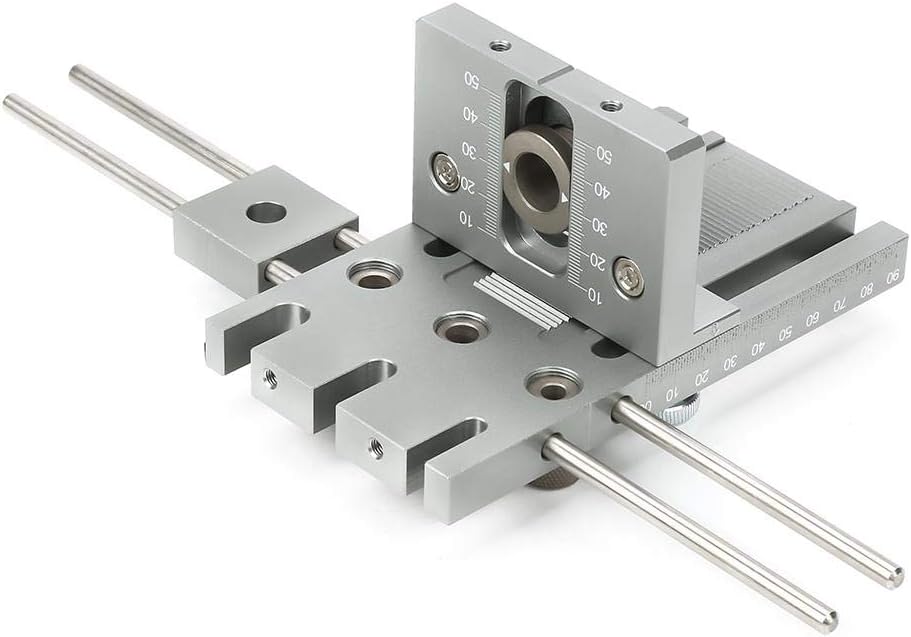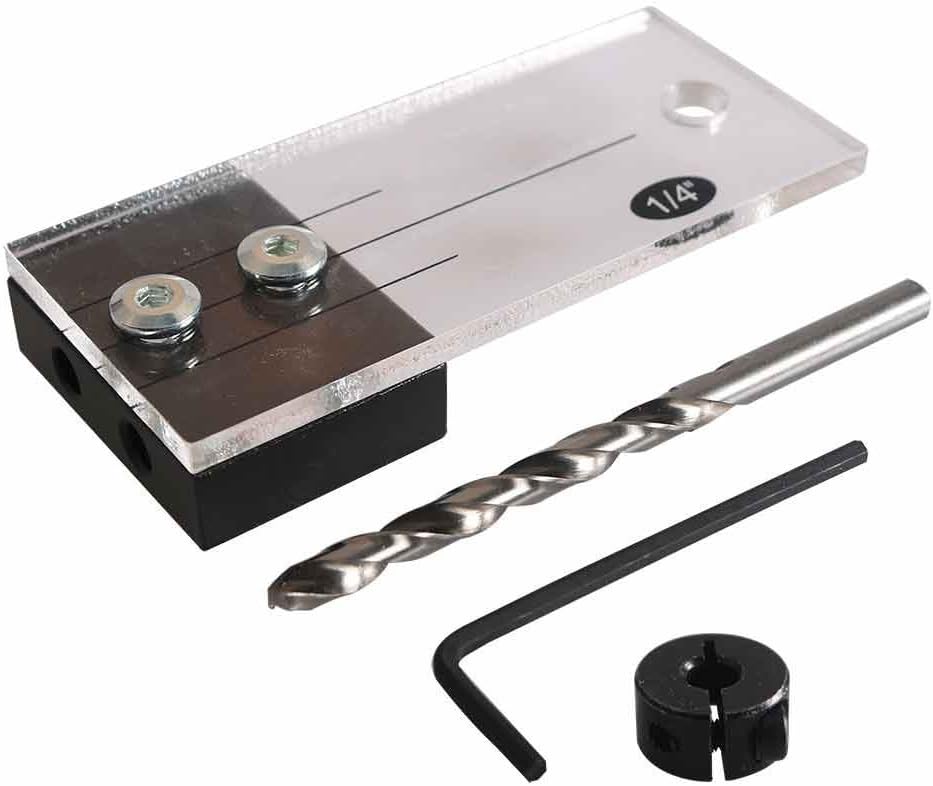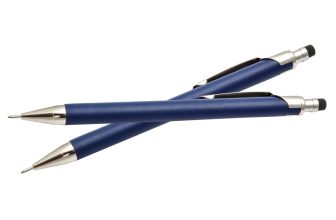Contents
Dowel jigs are an excellent tool for adding strength to your woodworking joints. They can offer a great deal of precision and make lining up matching holes quick and straightforward.
Choosing the best doweling jig for your purposes depends on the work for which you intend to use it. Some jigs are designed only for small projects, while others offer adjustability to fit most stock.
I tested several dowel jigs and put together these reviews to help you find the one best suited for your purposes. The buyer’s guide will help you navigate the many options and pick out the most important features to support your work.
Best Dowel Jigs – My Top Picks
BuildEazy.com may earn a commission if you purchase a product through one of our links.
Jessem specializes in jigs and tool attachments that bring precision and ease of use to a variety of different woodworking applications.
Jessem made this jig out of solid steel components, so it feels like it will stand up to many years of workshop abuse.
Despite its solid construction, it weighs only 2.6 pounds, so you’ll find it easy to move around your workspace and set up on your stock. I’ve dropped this jig countless times, and it has shown no signs of damage. Just holding this tool, I can tell that it’s very well built.
It includes three different attachments for drilling ¼”, ⅜”, and ½” holes, and they’re easy to change out quickly for projects that require differently sized dowels.
Each attachment has preset, incrementally locked measurements. With the use of the included alignment pins, it will take you seconds to line up the jig accurately and drill a perfectly spaced hole. This system makes it convenient to drill multiple holes rapidly.
It comes with three appropriately sized bits with adjustable locking bushings, so you can set your maximum bit depth for even more precise drilling.
It includes comprehensive instructions for use on a variety of different projects and in various applications.
This jig is relatively expensive, but considering the versatility and accuracy it will bring to your projects, I think it’s well worth the price.
Dowl-It 1000 Self-Centering Doweling Jig
The Dowl-It is made by Rockler, a company well-known in the woodworking industry for creating low-budget but good quality tools for the hobbyist woodworker.
This jig is made out of aluminum and steel, and it feels all but indestructible. Rockler constructed the center portion that accepts your drill bit out of hardened steel, so it’s unlikely to be damaged by your wood bits.
It weighs 2.35 pounds, so you can effortlessly position and reposition your jig on your stock as needed.
It includes six different bit guides measuring 3/16”, ¼”, 5/16”, ⅜”, 7/16”, and ½” in diameter, giving you the most options of any doweling jig I’ve used.
This tool uses a powerful screwing mechanism to clamp onto your stock. It opens up to 2”, so you’ll be able to use it with thicker workpieces than most. Best of all, the jig centers itself, so you’ll always be drilling directly into the center of the wood.
It doesn’t have any preset spacing, so you will need to unclamp and reattach your jig each time you want to drill a new hole. This process can be somewhat tedious if you’re drilling many different holes for a project. It also means you’ll need to measure before drilling if you want to be accurate in your spacing.
It doesn’t include any bits or bushings, so you’ll have to purchase them separately.
Best of all, it’s affordable enough for woodworkers on a budget. The accuracy and solid construction offer an excellent value for the price, although you will need to spend more on bushings and bits.
Woodstock D4116 Doweling Jig
Woodstock manufactures tools that blend the needs of hobbyist woodworkers and professionals to create high-quality products that are built to last.
This doweling jig is made of sturdy steel and aluminum. We’re confident this won’t get damaged easily and will last you through countless woodworking projects.
The aluminum parts help bring the weight down to 2.51 pounds, making it effortless to maneuver onto your workpiece and adjust until you have it set correctly.
It features drill bit guides made of hardened steel for longevity, and it includes five holes in ¼”, ⅜”, 5/16”, 7/16”, and ½” diameters. It has more size options than many other jigs, so you’ll have more options for the dowels you can use.
It only has one hole for each size, however, so you’ll have to release the jig from your stock, adjust, and reattach before drilling another hole. This can get a bit frustrating if you need to drill multiple holes into one piece of wood. You’ll also have to spend a bit of time measuring the jig placement to keep them accurately spaced, as there are no options for drilling holes at a preset distance.
This jig can accommodate workpieces up to 2” thick, but it won’t line the holes up in the middle of your stock. However, this isn’t an issue for most projects, given that dowels aren’t usually visible on the final product.
This is very affordable, but you will need to purchase bits and bushings separately before you use it.
Thincol Universal Dowel Jig Kit
Thincol makes a handful of tool add-ons and jigs aimed at making woodworking jobs more precise, and this dowel jig kit does just that.
It’s made predominantly out of aluminum with some stainless steel alignment pins. It feels a bit less durable than some other heftier jigs I tested, but it will still likely serve you well through many projects.
It’s a bit bulky once you have the adjustable spacer attached, but at 3.43 pounds, it’s not too challenging to set up and position on your stock.
It can accept drill bits in millimeter diameters only, so you’ll only be able to use metric bits sized at 6mm, 8mm, or 10mm and corresponding dowels.
You can use this jig with varying thicknesses of stock, and the clamp to hold it in place is adjustable, allowing you to self-center your drill holes.
This product gives you the most adjustability and customization options I’ve seen in a doweling jig. The sliding spacer lets you set an arbitrary distance between bit guides, and you can fit the three guides in the aluminum body with varying sized collars for preset spacing. It also has side-punch capability, so you can create T-shaped and L-shaped splicing on your joints.
The kit includes the main jig, collars to adjust your bit guides, an adjustable slider for custom positioning, alignment pins, three drill bits, and bit bushings for drilling a specific depth.
The jig is relatively straightforward to use once you understand how to set it up, and it allows for a high degree of efficiency. However, it does have a bit of a learning curve to it.
Big Horn 19695 ¼” Dowel Drilling Jig Kit
Big Horn provides budget-friendly hand tools for hobbyists and casual woodworkers.
This jig is made of plastic and plexiglass, so it’s far less durable than most other jigs. You’ll need to store this tool carefully and make sure you don’t drop it in your shop, as it’s unlikely to stand up to much abuse. However, the bit guides are made of steel and won’t be damaged easily by your drill bit.
The lightweight construction materials used in this jig make it one of the lightest I’ve used at just 4.2 ounces. You can easily maneuver and position it on your piece with one hand, and the use of clear plexiglass allows you to keep your holes accurately spaced with just some minor measuring.
It includes two bit guides that are both the same in diameter, so you’ll only be able to use this tool to drill ¼” holes. Furthermore, it doesn’t have any points of adjustability, and it only centers holes on ½” stock. You can use this for thicker workpieces, but the holes won’t be centered.
Although it has limited capability, it is very straightforward to use and requires nothing but a clamp to set up. It’s also one of the most affordable dowel jigs available, and it provides good quality and versatility for smaller projects for the price.
For a quick look at how this style of dowel jig works, check out this video:
AutoToolHome Woodworking Dowel Jig
AutoToolHome offers a wide array of drilling jigs and tools that fit into most woodworkers’ budgets but still provide decent quality.
This dowel jig is made mostly out of hard plastic, so it’s unlikely to last as long as other options that are made out of metal. However, the plastic does feel like it’s of good quality, and it does include metal bit guides, so the jig won’t get damaged by your drill bit.
The plastic lends itself to a lightweight tool, and this jig weighs just 6.6 ounces. You’ll be able to position it easily with only one hand, so you’ll have no issues getting it into place on your stock.
It doesn’t include an onboard clamping mechanism, and there is no convenient way to use your own clamp to affix the jig to your wood. It’s meant to be held in place against your workpiece with one hand while you drill with the other, so you should only purchase this tool if you’re comfortable with one-hand operation. This isn’t my favorite design, but the large brace that lays flat on your stock does allow for relatively good stability while you work.
It allows for accurate placement of your holes with an adjustable depth setting for different wood thicknesses and measurements on the side to get precise hole placement.
It only has three different bit guides that measure 6mm, 5/16”, and ⅜”, so you’ll be limited in the sizes you can drill. There is also just one bit guide per size, so any additional holes you plan to drill will need to be measured and set separately.
It doesn’t include any bits or bushings, but given the very low price, I think this is an excellent option for those looking for an inexpensive jig designed for smaller projects.
Telco Self-Centering Doweling Jig for Thick Timbers
Telco is a full-service machining company, so the hand tools they produce have a high degree of precision.
This dowel jig is made of high-quality metal and feels like it will stand up to extensive use and won’t get damaged easily. It weighs just 2.8 pounds, so it’s not difficult to set up on your workpiece or adjust.
It has five bit guides measuring ¼”, 5/16”, ⅜”, 7/16”, and ½” in diameter, so it’s suitable for use in most doweling applications. Each size has just one pilot hole, so you’ll have to unclamp and reset your jig each time you want to drill. This can be a bit of a pain, especially on larger jobs, which this jig can otherwise handle with ease.
The jig is self-centering, so no matter the thickness of your material, you can be sure your holes will be placed accurately in the center.
It uses a screwing mechanism to clamp securely to your workpiece, and my favorite thing about this jig is that it has a stock capacity of up to 6”, meaning it’s an excellent jig for using on big projects and very thick material.
Telco’s experience with professional machining makes this one of the most accurate jigs with which I’ve worked, and using it is very straightforward.
It doesn’t include bits or bushings and is rather pricey for a standalone jig. However, I recommend this if you’re looking for precision and consistency in your work.
Milescraft 1319 JointMate Handheld Dowel Jig
Milescraft specializes in jigs and tool attachments for hobbyist woodworkers and homeowners.
This jig is made of hard plastic components, so it won’t last through as many projects as those made of more durable metal. It is very lightweight because of the cheaper materials used and weighs in at just 8 ounces.
This jig is meant to be held in place with one hand while you use the other to operate your drill. It’s light enough to be comfortable during use. However, you may find that it’s too light and shifts around a bit if you don’t hold it tightly. It’s very straightforward to use, provided you keep a careful grip.
The adjustment knobs are more comfortable to turn and set than on most other jigs I’ve used, but they don’t have any onboard measurements to make centering accurate. You’ll have to carefully measure your piece and your jig fence to get your holes perfectly centered unless you use the pins to center, which can be a bit of a pain. As such, this isn’t the best jig for precision.
It has metal guides to resist wear from contact with your drill bit, and they allow you to drill holes for ¼”, 5/16”, and ⅜” dowels. You’ll need to adjust your jig each time you want to drill a new hole, and this can be tedious for larger projects that require extensive doweling.
It doesn’t include bits or bushings, but I still think this is an excellent option for woodworkers on a budget, given the price.
Wolfcraft 3751405 Dowel Pro Doweling Jig Kit
Wolfcraft is best known in woodworking circles for its quality measurement devices and jigs designed to improve accuracy in the shop.
This doweling jig is made almost entirely of aluminum with steel bit guides and plastic handles. It’s not as durable as other options made out of more rigid metal, but it does feel like it will last quite a while.
It’s on the lighter side at 1.9 pounds and is easy to situate on your stock.
It has three bit guides measuring ¼”, 5/16”, and ⅜”, so you’ll have limited options in the types of dowels you can use. You’ll need to reposition your jig each time you want to drill a new hole in your stock.
However, this jig can clamp two pieces of wood perpendicular to each other, allowing you to line up holes perfectly for doweling. Provided you measure accurately, you can save time on drilling holes in the second workpiece using the dual clamp. The clamps hold securely to help you get a clean hole drilled safely.
This kit comes with 60 dowels of varying sizes to get you started. It also includes bushings for your bits, but I strongly recommend buying bushings separately. The ones that come with the jig don’t hold well and loosened frequently while I was drilling, which was very frustrating.
This jig comes with a 5-year limited warranty that covers damage from manufacturing defects.
It’s very affordable, and it’s a good quality tool for the money.
Milescraft 1311 JointPro Professional Doweling Jig
This jig is made out of two aluminum parts with steel bit guides, and there are some rubber and plastic components as well. It’s designed well and feels like it will stand up to regular use, but it won’t last as long as jigs that are made of more durable metals.
It weighs 3.86 pounds in total, but the weight is split between the two clamping pieces. Each is easy to handle and set on your workpiece without too much effort.
You can use this to drill holes for ¼”, 5/16”, and ⅜” dowels, and the jig includes three bit guides for each size. This setup lets you drill three perfectly aligned holes in both sides of your joint without having to adjust the clamp, making your job easier, less time-consuming, and more precise.
The jig does lack a bit in adjustability. You can’t set the distance of the holes from each other, and you can’t adjust the position of the holes on your stock either. You can use wood between ½” and 1½” thick, but the holes won’t always be centered in your stock.
It doesn’t include any bits or bushings, so you’ll need to purchase those separately before you can get started.
This jig is relatively affordable, especially for the accuracy it provides. I would recommend this tool to anyone looking for precision in their work but still wants to keep their expenses to a minimum.
Eagle America 445-7600 Wide-Capacity Self-Centering Dowel Jig
Eagle America is known for very high-quality woodworking tools that are made in the United States. However, this jig is really made by MLCS, a lower-quality tool manufacturer based out of Taiwan. The two companies have partnered, but I’ve been disappointed by the MLCS line of products and wouldn’t recommend them or this doweling jig.
It’s made of aluminum, so it’s relatively lightweight at 3.24 pounds, but it won’t stand up to as much abuse as a jig made of harder metal.
You can use this to drill holes for dowels measuring ¼”, 5/16”, ⅜”, 7/16”, and ½”. The two larger sizes can only accommodate one hole being drilled each time you affix the jig to your stock. With the included bushings for the smaller sizes, you can drill up to three holes without repositioning the jig.
However, the holes’ spacing isn’t adjustable at all, and they’re very close together when you drill three of the smaller sizes in succession. Realistically, you’ll only drill two holes before having to unclamp and reset your jig.
The clamping mechanism is smooth and creates plenty of pressure to hold your stock in place while you work.
This jig doesn’t include bits or bushings to control drilling depth, so you’ll need to purchase those separately.
My biggest issue with this jig is that it claims to be self-centering but doesn’t actually center the holes on your stock. It’s relatively close, but if you’re looking for precision, this jig won’t supply it.
Especially given the somewhat high price for this jig and the materials’ quality, I would recommend choosing a different tool for doweling.
Buyer’s Guide
As you can see, tool manufacturers design dowel jigs for varying purposes, so a single jig isn’t always the best for different jobs. Make sure you consider the below factors when choosing a jig that will be adaptable to your projects.
Intended Use
A dowel jig’s design often dictates what projects for which it will be most useful. You can easily tackle smaller projects with a manual dowel jig if a high degree of precision isn’t required. In contrast, larger pieces of stock for more extensive projects will usually require a jig made specifically for wide material.
Like the Big Horn 19695, some jigs are designed for use with thinner material about ½” thick. If you plan to use your jig to join thicker wood together, you may want to opt for one that can handle bigger stock. The Telco Self-Centering Doweling Jig is more expensive but can adapt to material up to 6” thick, allowing you to work with just about any size wood you’d use for a standard project.
Accuracy
The precision of doweling jigs varies greatly, so you will need to consider how accurate you want your dowel holes to be. Some jigs, like the Thincol Universal Dowel Jig Kit, offer extreme precision that will make lining up doweling holes a breeze.
The most accurate dowel jigs usually include multiple onboard measurements and pin alignment to ensure your holes are perfectly spaced every time. Other jigs sacrifice accuracy in drilling position in an effort to reduce the price.
Self Centering
Some jigs can center themselves on your workpiece, meaning you set the jig to your stock’s width, and your bit guides will automatically be centered based on the thickness.
The strength of the joint you create when doweling isn’t dependent on how close to center your dowels are, but some woodworkers prefer centering jigs to ensure the best fit possible.
Clamps
While manual jigs are meant to be held in place with one hand while you drill with the other, most other dowel jigs include a clamping mechanism that you fasten to your stock. Clamping jigs aren’t as quick to use as manual ones, but they offer more stability and accuracy while you drill. They also free up one hand, which can further stabilize your workpiece.
Durability & Construction Material
Dowel jigs are often made out of steel, aluminum, plastic, or some combination of the three. Steel jigs will be the longest-lasting by far and will stand up to the most abuse in your shop without getting damaged.
Aluminum jigs are lighter than steel ones and are easier to move around and adjust on your workpiece, but they may not last through as many projects as those made of steel.
Plastic dowel jigs are typically manual jigs that are very lightweight and effortless to adjust. However, hard plastic won’t last as long as metal, and you’ll be more likely to have to replace it due to damage.
Versatility
You can use most dowel jigs to create edge-to-edge (180-degree) and edge-to-end (90-degree) joints. However, some options can perform side punches, allowing you to do splicing, and you can adjust some for rabbeted edge-to-end joints and other variations.
Some woodworkers will find that a high degree of versatility isn’t worth the additional cost it usually comes with, while others will want maximum capability out of their dowel jig.
Ease of Use
Dowel jigs range from very straightforward to very complicated to use. Manual jigs typically require no setup, no adjustment, and no instructions. Merely looking at the tool is sometimes enough for woodworkers to understand how to use it.
Doweling jigs with a high degree of customization or adaptability to different jobs and joints can be overwhelming to familiarize yourself with. I’ve made dowelled joints countless times, but I was still a bit intimidated by my first look at the Thincol Universal Dowel Jig Kit. Once you get the hang of any jig, it’s sure to make your life easier, but the learning curve can be steep for some options.
Bushing Size
The bushing is the bit guide that will direct your drilling and keep your bit moving in a straight line into your workpiece. Some dowel jigs, like the Big Horn 19695, come with just one bushing and limit you to a single dowel size. Others, like the Dowl-It 1000 Self-Centering Doweling Jig, offer six different sizes that let you match the dowel thickness to your specific project.
Bushing Material
The bushing on most dowel jigs is made out of hardened steel so that it resists damage from your drill bit as it passes through to your stock. I personally would never purchase a dowel jig that doesn’t use hardened steel bushings, as softer material can easily be scuffed by your bit and lead to inaccurate and potentially dangerous drilling if the hole widens over time.
Price
I’ve used dowel jigs from the $10 range up to around $200. For a tool that doesn’t get used in every project and doesn’t necessarily require a high degree of accuracy or adjustability, you may want to opt for a cheaper jig to stay within budget. If you plan on honing your woodworking skills over the next few years and want to get into more complicated joinery, a higher-end tool will likely be best and offer the most room for improvement and growth.
Wrapping Up: Which Dowel Jig is the Best?
It should be clear by now that there is no such thing as an ideal dowel jig. The best one for you will be able to handle the width of material for which you plan on using it and provide enough versatility to adapt to your current and future projects.
My favorite dowel jig is the Jessem Model 08350 Dowelling Jig Master Kit. It’s pricey, but it includes everything you need to get started, is versatile enough to be used for most doweling applications, and is built to last through just about anything that may happen in your shop.
Frequently Asked Questions
Do I Need A Jig For Dowels?
While dowel jigs can be very useful if you want to drill some holes to reinforce something with dowels, they’re not absolutely necessary, and you can definitely get by without one. We’ll explain how you can do it here.
The reason doweling jigs are so useful is that you need to make sure that the holes you’re drilling on each piece of wood line up with each other, but you can do that without one. The simplest way is to take a piece of scrap wood that you don’t need for anything else
Make sure that it’s about the same size as the other pieces of wood you’re going to use. Carefully mark two points on it that are the right distance apart, and then hammer a nail into each of those points.
Use a pair of bolt cutters to take the nail’s heads off, and you’ll be left with fairly sharp points in their place.
You can now press these into the points you’ve chosen for your dowels. When you take them off your wood, they’ll leave marks in the places where you need to put your dowels.
Repeat as necessary for however many dowels you need to use. This isn’t 100% accurate, but it’s good enough for most things and can be done very quickly – it’s certainly a lot quicker than measuring everything out manually.
How Do You Use A Self Centering Dowel Jig?
Self centering dowel jigs are loved by woodworkers everywhere and make doweling far easier than it would be otherwise. The main part of the jig is a steel block with holes for the drill bit – this helps to guide the drill bit and keep it from going anywhere it shouldn’t.
The holes are located exactly in the center of the block and are perpendicular. The block also has a screw running through it, and turning this screw moves each side of the jig the same amount This is where the “self centering” part comes in. As you clamp the jig to the wood, the holes on the jib are centered on the wood automatically.
In most cases, all you’ll need to do here is mark the dowel location carefully on the wood, including center lines, and then make sure the jig is lined up properly with the center lines. Then, just start drilling.
Depending on the project you’re working on, you might need to make sure the holes are drilled to a specific depth, and if so, then you can use a stop collar to stop the drill from going too far.


















